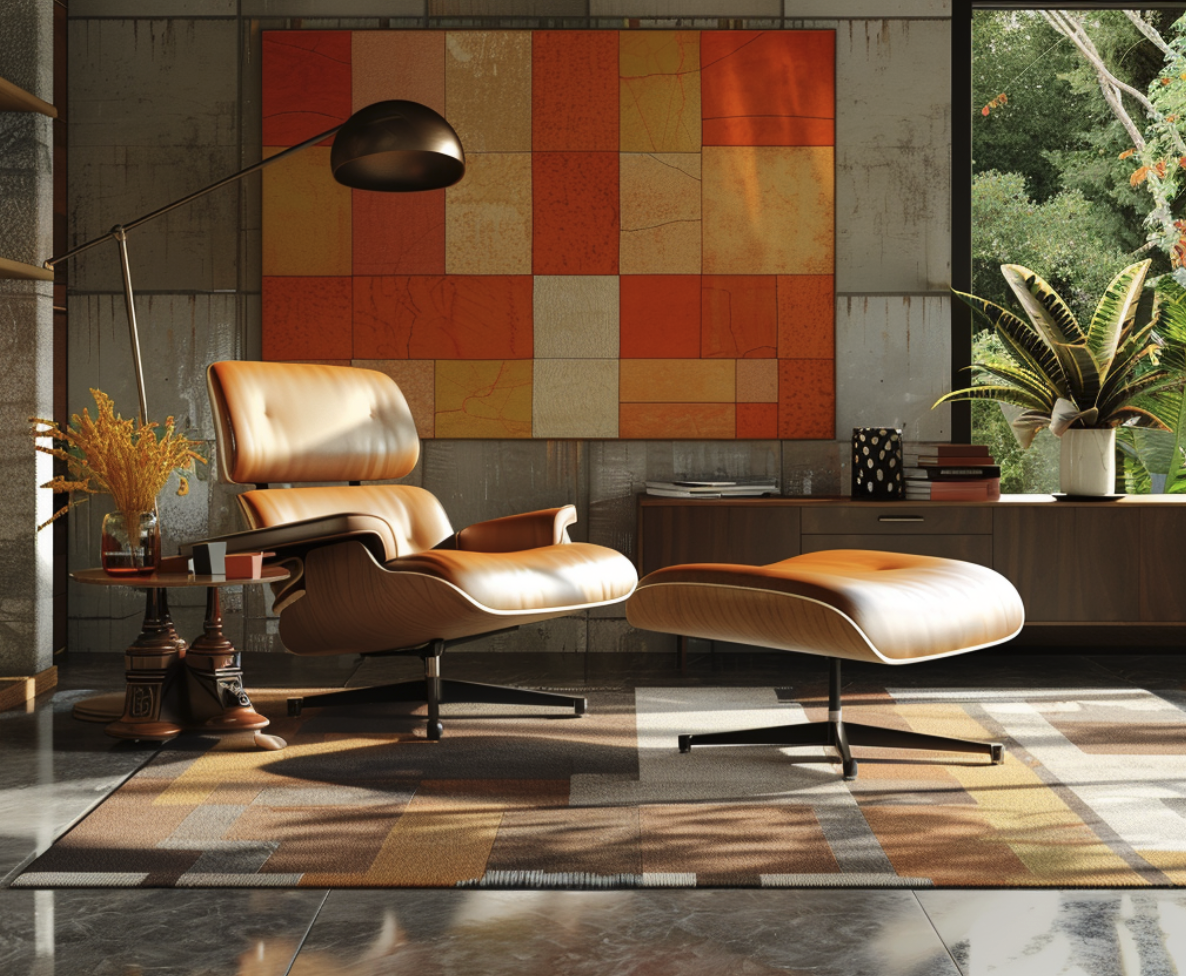You recently cleaned your living room carpet, but like chasing your tail, tiny bits of dirt and pet hair reappeared day after day. You finally threw in the towel, realizing carpets are just a magnet for mess.
On the other hand, your wooden parquet floor is clearly seen better days. It’s worn and damaged, definitely needing repairs and a fresh coat. It’s time to bite the bullet and give it some tender loving care.
Ahead of you are days of moving furniture around the house, plenty of dust and strong smells of varnish. You are thinking more and more about installing floor tiles in the living room, but so many questions are bothering you.
You are concerned about the coldness, hardness, appearance and price. Will your living room with a tiled floor continue to be a gathering place, a space of comfort and warmth?
You decided to do the right thing and find a solution yourself.
You are in the right place here.
Titles in the Living Room? Advantages and Disadvantages
There are many colors, styles and patterns on the market that can fit into any decor. You can have a living room flooring in a modern, Mediterranean, Provençal, rustic or industrial style.
Don't be afraid to mix and match for a truly eclectic style! The tile design trends are getting bolder and richer and they are slowly conquering living rooms around the world.
Tile flooring is the cleanest type of flooring you can have. Unlike carpets that never quite feel truly spotless, tiles are a game-changer. A simple cloth and some everyday cleaning solution handle even dried-on spills with ease. They do not absorb dust and dirt and will look like you just installed them for a long time.
How long, you ask? So long that you will forget when you put them on. It is one of the most durable floor coverings. They are resistant to scratches, water, shocks, wear and frequent use.
Durability comes at the expense of comfort. Tiles can be hard, uncomfortable and unpleasant to walk on, especially if you have small children or elderly family members. You can solve the problem with soft rugs placed where you want to be more comfortable.
Worried about chilly tiles? Underfloor heating offers a toasty solution! Tile and underfloor heating companies often report zero complaints about cold feet from their satisfied customers.
The initial investment in installation and energy use might seem daunting, but underfloor heating is actually more energy-efficient than traditional methods. This translates to long-term savings, thanks to its even heat distribution.
Underfloor heating installation costs for a 200-square-foot room can range from $1,000 to $5,000. Several factors influence the price, including:
- Room size: Naturally, larger rooms require more materials and labor.
- System type: Electric and water-based systems have different installation costs.
- Manufacturer: Premium brands may cost more than budget options.
- Heating type: Electric vs. water underfloor heating can affect the price.
- Existing insulation: Better insulation translates to lower installation costs.
- Air conditioning: Existing air conditioning systems might impact installation complexity.
One important consideration remains: the upfront cost and installation complexity of underfloor heating. This is a worthy topic to explore in more detail in a separate discussion.
Installation of Tiles in the Living Room
While DIY tile installation is an option, consider entrusting the project to experienced professionals. Cutting, straightening, gluing, protecting, all these jobs are much more challenging than you think. It is enough for one tile to be out of place and it can spoil the whole look of your living room.
Securing a qualified installer? Here's how:
- Gather quotes: Obtain estimates from several contractors to compare pricing.
- Portfolio review: Request to see examples of their past work to assess their skill level.
- Price considerations: Installation costs typically range from $20 to $50 per square meter. This can vary based on:
- Tile type: Different tile materials (ceramic, porcelain, etc.) have varying installation requirements.
- Installer experience: More experienced professionals may command higher rates.
- Location: Geographic factors can influence labor costs.
- Project complexity: Intricate designs or challenging layouts can increase installation costs.
Subfloor preparation is crucial, because extensive subfloor work, like leveling or waterproofing, can raise the price.
Project complexity is an important factor too, given the fact that large areas with intricate curves and corners require more labor, leading to higher costs.
Installer experience can be decisive in considering tiles as an option for a living room, because a less experienced tilers may offer lower rates (around $20 per square meter), but their work might not include grouting or edge finishing.
You can save on the price of the tiles themselves. It can differ by up to 50% in retail and wholesale. There are many wholesale companies that can offer you a better price. You can also get it from local retailers for your regular customers.
Ideas and Designs
This longevity makes thoughtful design crucial for a space like the living room, the heart of family life. Here's a look at some inspiring ideas and design trends for 2024.
The aesthetic possibilities provided by tiles are endless. But if you want to stick to some general interior rules and successfully create a warm and comfortable atmosphere in a space that is used as a common space, you might choose neutral tones like gray, cream or beige.
The shape and size of the tiles are also important design elements and should be chosen carefully. Large tiles create the illusion of space, while smaller ones are intended for details.
Although you no longer have wooden parquet in your room, you can get a great alternative. Tiles with the texture and appearance of wood can be found in a wide range of tile colors and grains. So you will get a look even more attractive than natural wood itself.
You can even have that old carpet of yours that has been driving you crazy. A ceramic rug is possible because there is such a variety of patterns and you can play with them. You will get a colorful floor or even an oriental aesthetic of expensive Persian carpets.
For a touch of timeless elegance and a uniquely personal character, natural stone tiles elevate any living space. Marble, granite, travertine, slate look especially nice in living rooms, for which we usually choose furniture in neutral colors. Natural stone will bring a feeling of warmth. The space will exude elegance and luxury.
You will be surprised by the modern look of mosaic tiles in the living room. If your living room occupies a large space or is connected to the dining room and kitchen, you can break up the floor space with a mosaic "carpet" that will accentuate the area intended for conversation.
Monochromatic tiles offer a sophisticated approach to living room design, combining timeless simplicity with a modern edge. Opting for large, dark-toned tiles further enhances the space, creating a sense of depth and undeniable visual appeal.
Tips for Saving Money on Underfloor Heating:
· Install a thermostat: A thermostat allows you to control the temperature of the floor heating and prevents unnecessary heating when you are not there.
· Use timers: Timers can help you automate underfloor heating and save money.
· Choose the right tiles: Choose tiles that are permeable and conduct heat well.
· Insulate the floor: Good floor insulation can significantly reduce heating costs.
· Consider alternative energy sources: If you have access to solar or geothermal energy, you can use them to power underfloor heating.
Conclusion
All things weighed, are the tiles a wise pick for the living room? Absolutely! Tiles offer a durable, low-maintenance option perfect for high-traffic living rooms. From classic elegance of natural stone to trendy monochrome designs, there's a style to suit any taste. They're easy to clean, resist spills and scratches, and can even radiate warmth with heated floors. Consider your needs and desired aesthetic to find the perfect tile for your living room.










